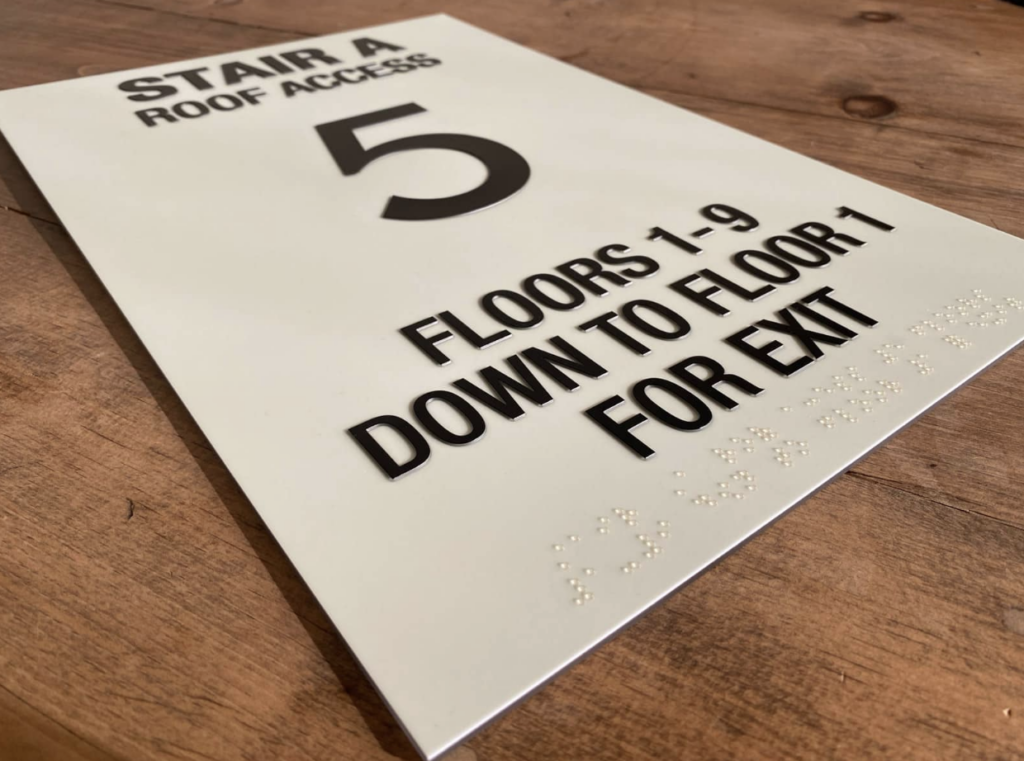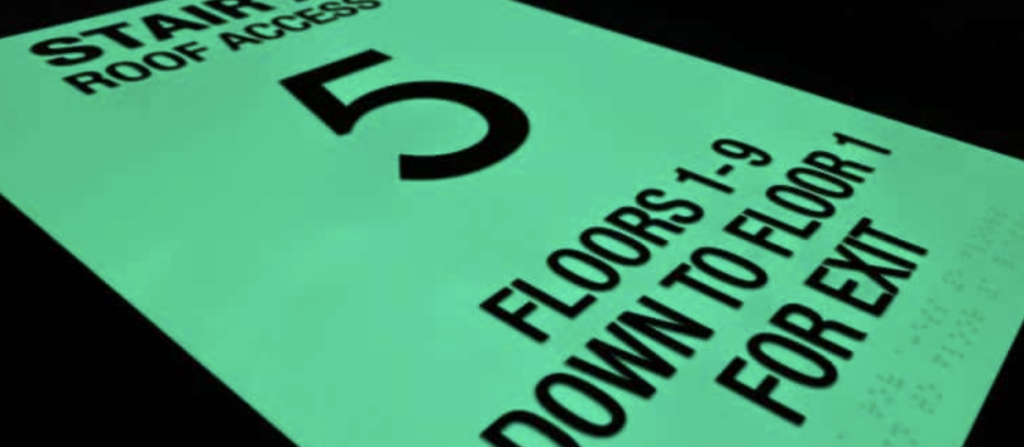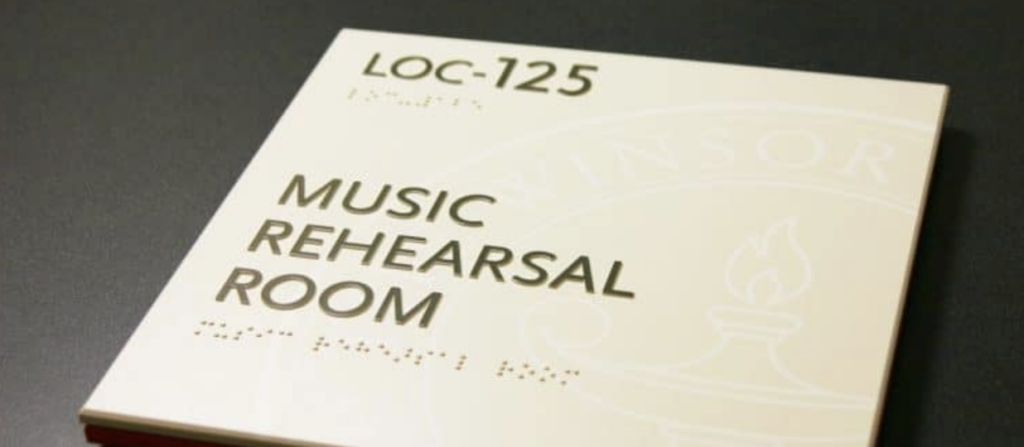Photoluminescent signs are critical for ensuring safety in emergency situations. These high-performance, glow-in-the-dark indicators can be found on handrails, steps, baseboards, and walls. Architects and designers know the importance of luminous signs to enhance the public’s safety in an emergency.
Why Photoluminescent Signs Matter
The events of September 11, 2001, underscored the significance of photoluminescent signage. The National Institute of Standards and Technology (NIST) found that photoluminescent signs and markings in the World Trade Center stairways helped a significant number of survivors find their way to safety. As a result, new national requirements were established for luminous egress pathway markings, highlighting the importance of these signs in saving lives during emergencies.
Regulations for Photoluminescent Egress Pathway Signs
Photoluminescent signs are now a mandatory requirement for all exit enclosures in buildings of six stories or more, including hotels, office buildings, and healthcare facilities. Luminous markings and signs must be installed on steps, landings, handrails, and doorways to ensure safe movement during evacuations. Compliance with local codes, which vary by region, is essential as building inspectors and fire code officials increasingly focus on these regulations.
Specific Requirements for High-Rise Buildings
In high-rise buildings, photoluminescent egress path markings must include luminous floor-level identification signs that are at least 12×18 inches. Many state codes also require these signs to feature raised characters and Braille. For example, New York’s Local Law 141 mandates that exit routes provide emergency lighting and directional signs that are compliant with the UL 1994 standard. This standard ensures that photoluminescent egress path marking systems offer sufficient illumination for visibility during power outages.
Integrating Photoluminescent Signs with Other Signage
For signage providers, photoluminescent signs are an excellent complement to existing interior ADA-compliant photopolymer signs. When reviewing project specifications for interior signage, be sure to look for ‘Photoluminescent’ requirements, which are typically listed in Division 10 alongside other interior signage needs. Opportunities to bid on photoluminescent signage can often be found in sections like Div. 10 1443 or Div. 10 4500.
Nova Polymers: Your Source for Photoluminescent Solutions
Nova Polymers offers a range of photoluminescent products for the sign fabricator, including the UL1994-listed NovAcryl 250 PermaGlow materials. These materials absorb ambient light and provide photoluminescent emergency guidance for up to 90 minutes, ensuring safety even in the darkest conditions. Our products all the sign fabricator to make emergency photoluminescent signs 100% ADA-complaint.

Ensure Safety with Photoluminescent Signs
Before finalizing your building’s development process, install photoluminescent ADA-compliant signage as well as luminescent markings. These essential additions are crucial for public safety and compliance with current regulations.
Contact Nova Polymers today for more information about our photoluminescent polymer sign solutions and how they can enhance your building’s safety.




